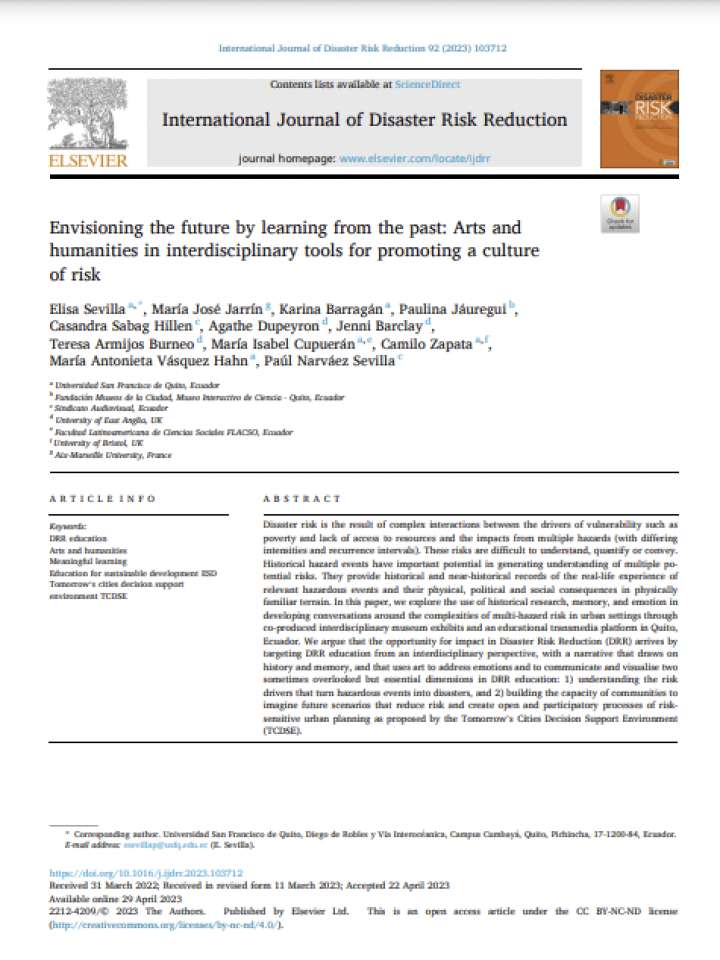Envisioning the future by learning from the past: Arts and humanities in interdisciplinary tools for promoting a culture of risk
In this paper, researchers explore the use of historical research, memory, and emotion in developing conversations around the complexities of multi-hazard risk in urban settings. There are many examples of the use of historical records or compilations of past hazardous events being used to inform future planning.
The researchers argue that the opportunity for impact in Disaster Risk Reduction (DRR) arrives by targeting DRR education from an interdisciplinary perspective, with a narrative that draws on history and memory, and that uses art to address emotions and to communicate and visualise two sometimes overlooked but essential dimensions in DRR education:
- understanding the risk drivers that turn hazardous events into disasters, and
- building the capacity of communities to imagine future scenarios that reduce risk and create open and participatory processes of risk-sensitive urban planning as proposed by the Tomorrow's Cities Decision Support Environment (TCDSE).
Explore further
